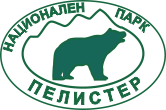Invertebrates
Invertebrates
Invertebrates are animals that neither possess nor develop a vertebral column (commonly known as a backbone or spine), derived from the notochord. This includes all animals apart from the subphylum Vertebrata.
Familiar examples of invertebrates include arthropods (insects, arachnids, crustaceans, and myriapods), mollusks (chitons, snails, bivalves, squids, and octopuses), annelids (earthworms and leeches), and cnidarians (hydras, jellyfishes, sea anemones, and corals).
Number of extant species
By far the largest number of described invertebrate species are insects. The following table lists the number of described extant species for major invertebrate groups.
The IUCN estimates that 66,178 extant vertebrate species have been described, which means that over 95% of the described animal species in the world are invertebrates.

Pelister’s invertebrate fauna consists of terrestrial (Terrestrial) invertebrate fauna and aquatic macro-invertebrates living in Pelister.
- Pelister’s earthy (Terrestrial) invertebrate fauna shows the presence of a total of 288 taxa, belonging to a total of 10 groups of invertebrates. The largest number of taxа are: Coleoptera – Beetles – (130), Orthoptera – The grasshoppers and crickets – (107), Diptera: Chironomidae – Double-winged: Mosquito-bell-ringer (35) and Gastropoda – Snails and Slugs (30) species. In the following taxa the presence of only 1 to 5 species is recorded at: Hymenoptera, Homoptera, Heteroptera, Dermaptera, Opiliones and Psocoptera.
- Aquatic invertebrate fauna of Pelister has been identified as a total of 211 taxa, distributed in 13 groups of aquatic worms, leeches, mollusks, shrimp and aquatic insects. Aquatic moths are present with a number of 53 taxa (Trichoptera), indicating dominant family Limnephilidae (23 taxa). At Pelister are present and there are a great variety of Diptera, 40 taxa, Plecoptera, 39 taxa, as well as Oligochaeta, 28 taxa. The Ephemeroptera in the Pelister area are known with 14 species. Crabs (Crustacea), are present with 9 species. Leeches (Hirudinea, 5 species), aquatic snails and semi-hardworms (Crustacea u Hemiptera, 4 species) and planarians (Turbellaria, 2 species) are prevalent after crabs.





